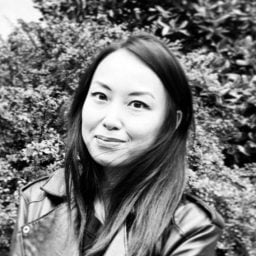Art & Exhibitions
Olafur Eliasson’s New Kaleidoscopic Visions Make Their Dazzling Debut in L.A.
"OPEN," part of PST ART, marks the artist's first solo exhibition in the city.
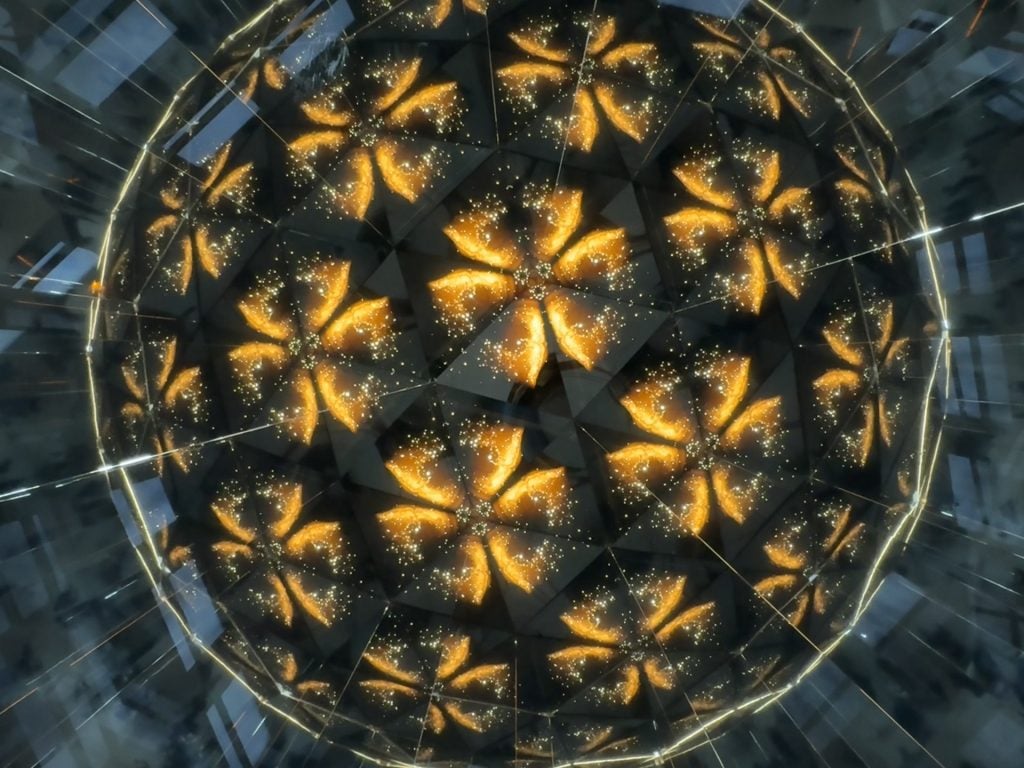
“You can see the inside of the building outside” is how Olafur Eliasson described the sprawling facility that’s been housing the Geffen Contemporary at MOCA for more than four decades. It’s an apt observation as the interior of the structure—once a city warehouse, then a police car garage—is indeed reflected in its industrial exterior, forged with concrete, glass, and steel. But at his new exhibition within the space, Eliasson, as is his practice, is attempting a fresh way of experiencing the museum: by bringing its outside inside.
Now on view, “Olafur Eliasson: OPEN” takes over the entirety of MOCA Geffen with about a dozen site-specific installations commissioned by the institution, as well as other recent pieces. While individually distinct, the latest works all emerge from Eliasson’s ongoing inquiries into how color, light, and geometry in concert can reshape and reawaken perception and environmental awareness. The exhibition marks the Icelandic-Danish artist’s first major outing in Los Angeles, as part of the fourth edition of South California-wide Getty initiative, PST ART.
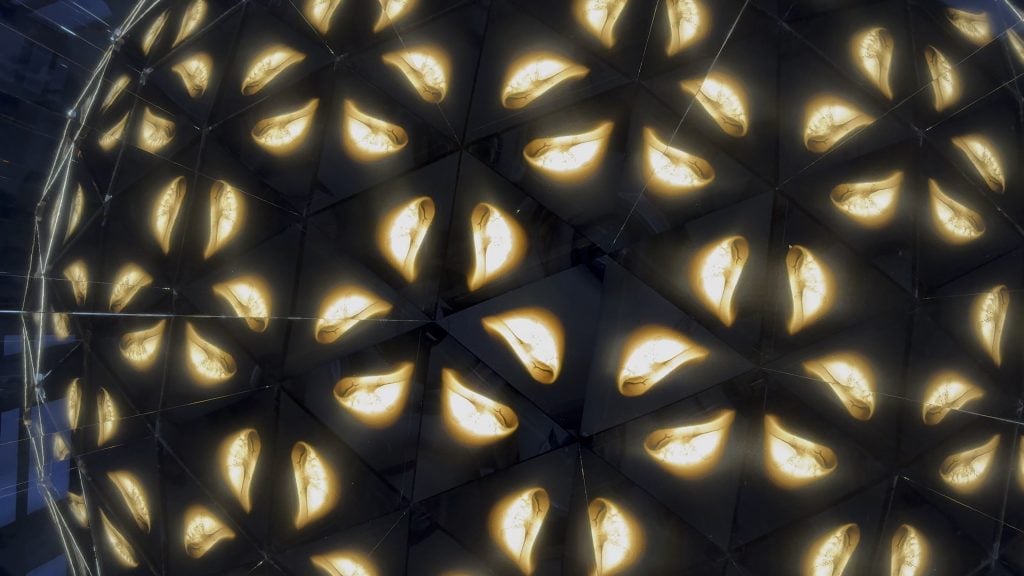
Olafur Eliasson, Kaleidoscope for beginning at the end (2024). Photo: Olafur Eliasson © 2024 Olafur Eliasson; Courtesy of the artist; Tanya Bonakdar Gallery, New York/Los Angeles; neugerriemschneider, Berlin © 2024 Olafur Eliasson.
“I’ve been very interested in slowness,” he said in opening remarks at the exhibition’s preview. “Slowing down is part of opening up. It’s in slowing down your attention that you suddenly see more than you thought you would see.”
The main gallery delivers on Eliasson’s promise. Centered here are a handful of observation towers, tapering up toward the ceiling, under which visitors are invited to glance skyward. What they’ll see are the artist’s signature kaleidoscopic sights, formed by light and mirrors, that conjure his speculative futures (a yellow-tinged solar future circulating with plastic garbage bags, say). Other towers offer glimpses out the museum’s skylights, reflected by mirrors and LED strips, which allow the works to shift with the weather and time of day.
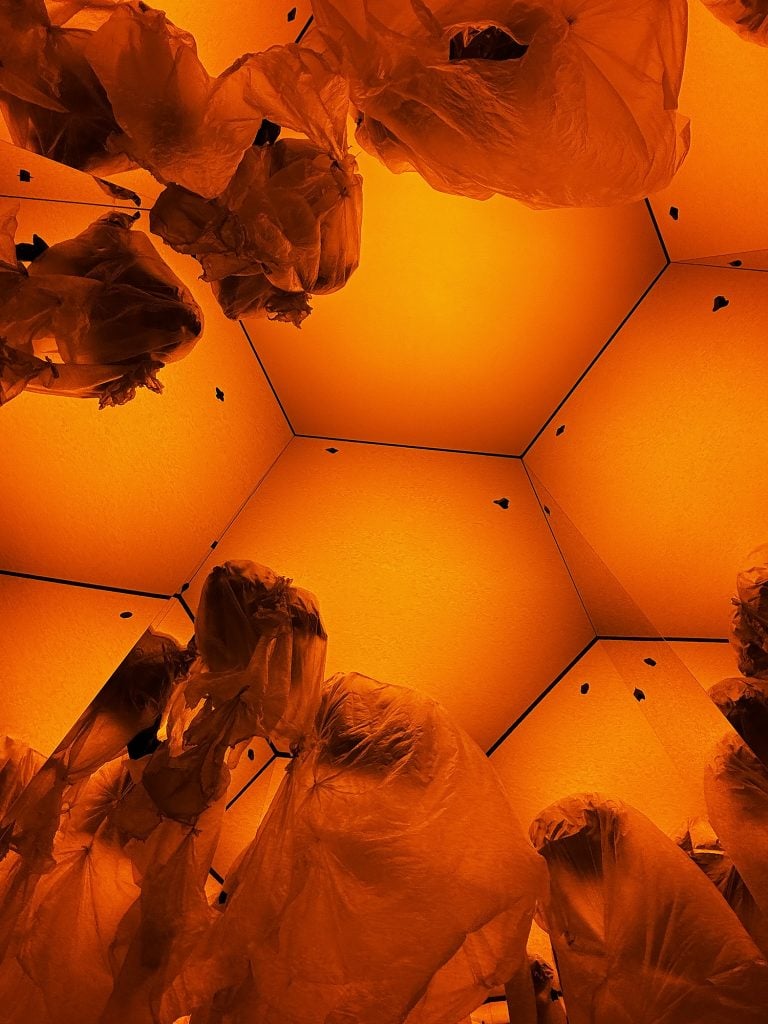
Inside Olafur Eliasson’s Viewing machine for imagining oceanic futures (2024) at MOCA Geffen. Photo: Min Chen.
In another gallery stands a pair of nondescript triangular devices. But peer into their apertures and you’ll find complex spheres containing myriad other geometric forms, created once again with colored lights and mirrors. It’s a technique the artist has perfected over more than two decades. Even as you discover the optical trick, the kaleidoscopic effects still wow the eye.
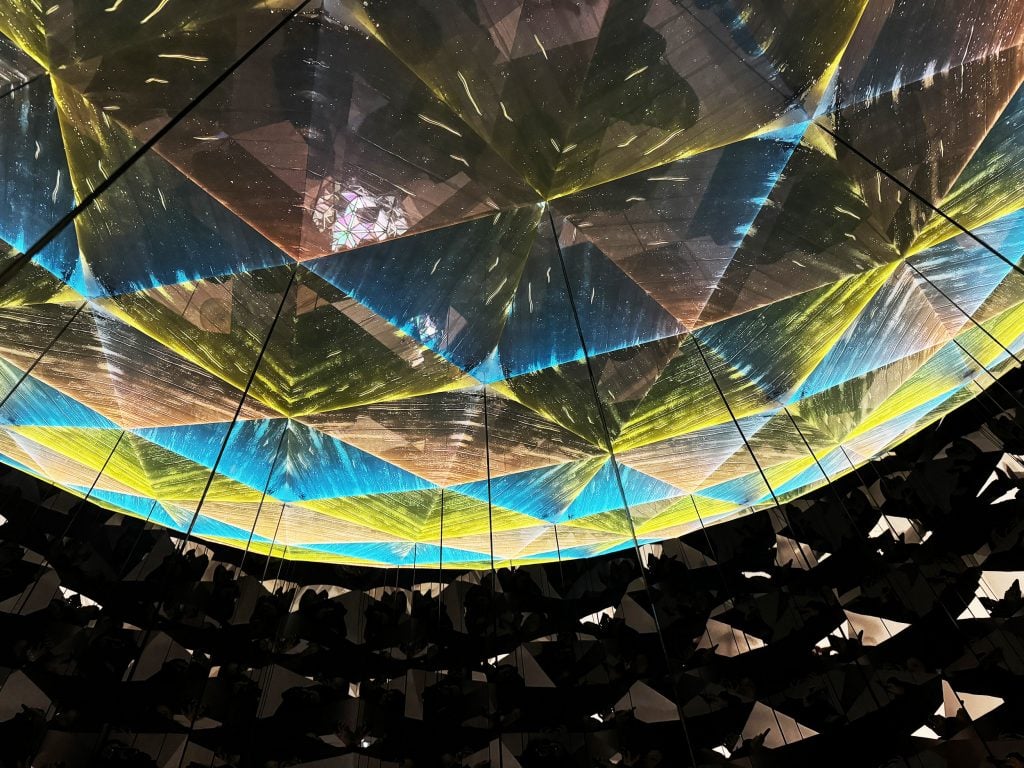
Olafur Eliasson, Kaleidoscope for uncertainty and surprises (2024) at MOCA Geffen. Photo: Min Chen
A colorful sculpture of a rhombic triacontahedron hangs nearby, seemingly bringing those prismatic illusions into reality—its combination of polarizing filters and plastic amplifying the mind-boggling interaction between light and shapes. The work bears the apt title, Your changing atmosphere.
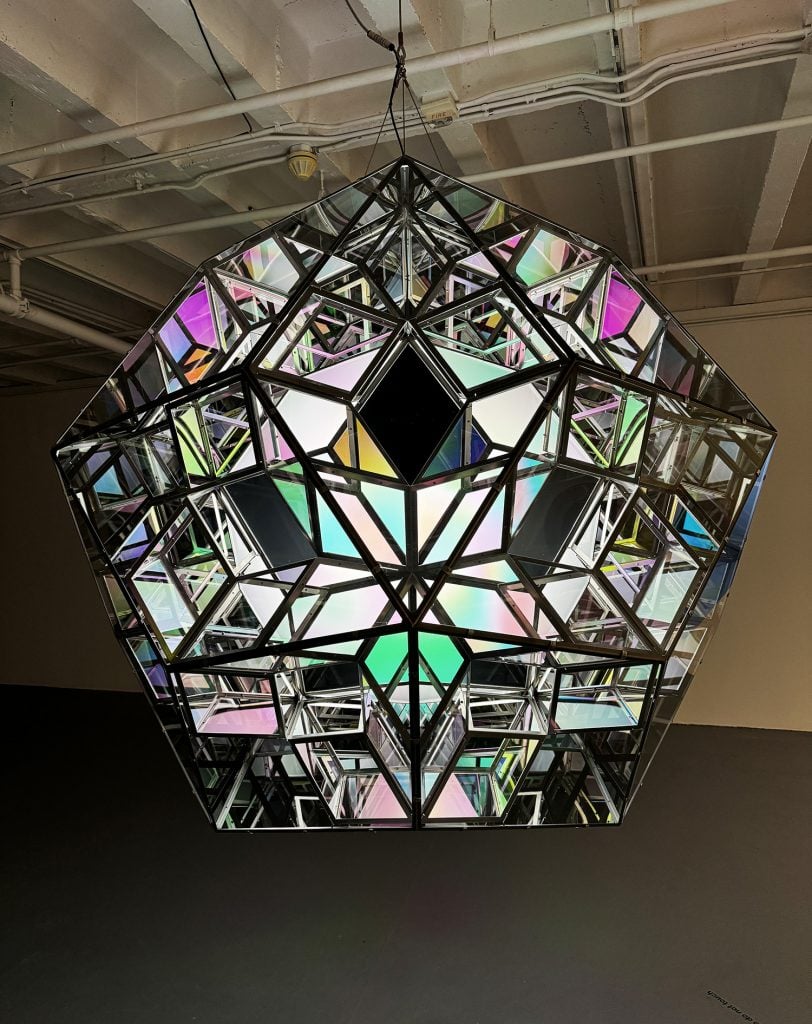
Olafur Eliasson, Your changing atmosphere (2024) at MOCA Geffen. Photo: Min Chen.
The museum’s environs also fuel another work: Weather-drawing observatory for the future (2024), a giant drawing machine, its stylus equipped with ink, that creates marks based on meteorological data. A new drawing is created each day, its patterns determined by factors including temperature and solar radiation. When I visited, the machine had already produced a wonderfully detailed radial composition based on the day’s balmy weather. Drawings from past days will be hung around the gallery, in a display that will evolve as the exhibition progresses.
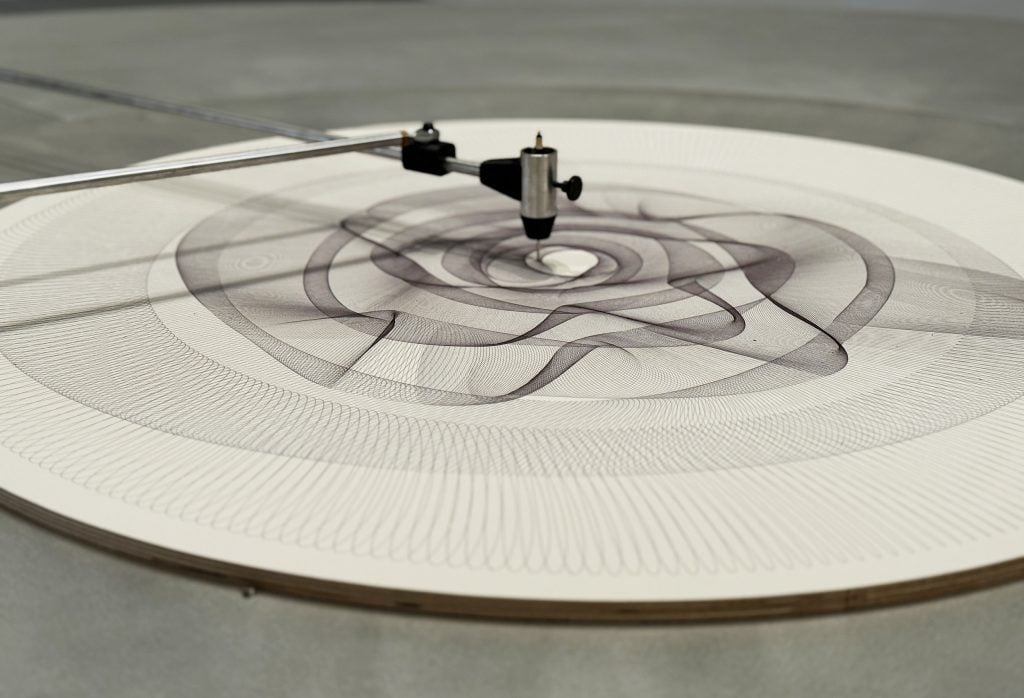
Olafur Eliasson, Weather-drawing observatory for the future (2024) at MOCA Geffen. Photo: Min Chen.
Typical of Eliasson’s productions, the throughline of audience engagement runs through his new pieces. Save for Weather-drawing, the bulk of his latest commissions invite visitors to interact with them, to see through their lenses, and to play. As Eliasson noted, with the exhibition, “we are trying to democratize the accessibility to art… This is like, ‘You are welcome.'”
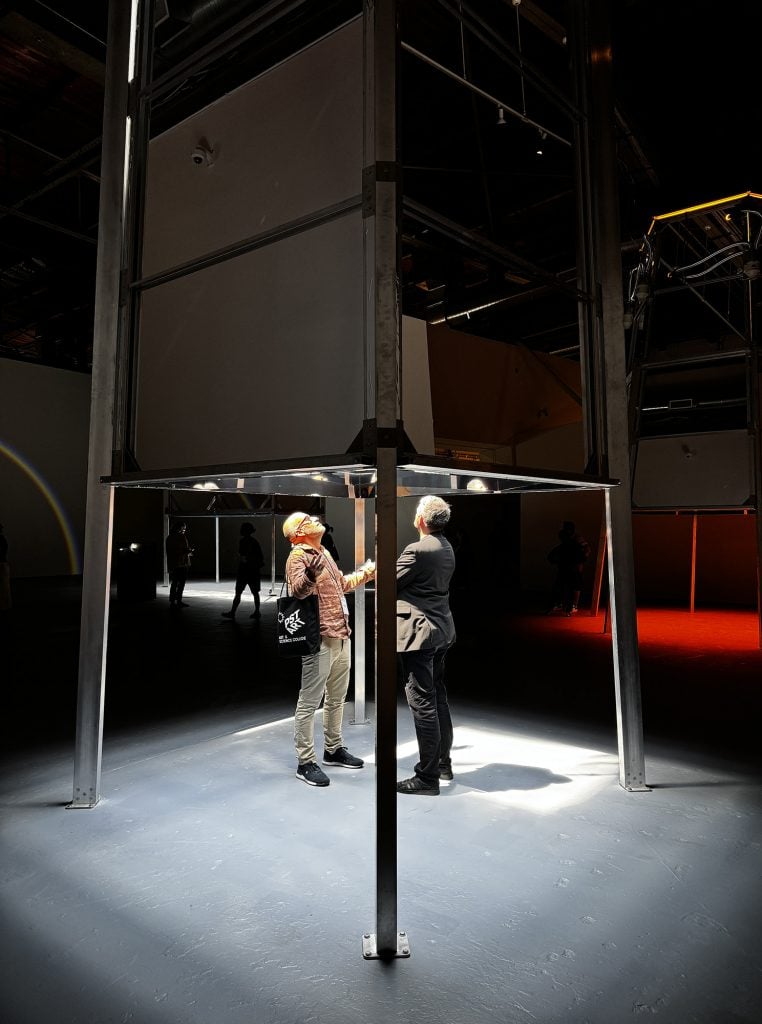
Visitors gazing up at one of Olafur Eliasson’s observational towers at MOCA Geffen. Photo: Min Chen.
That’s most evident in Your sunset shadow, an installation, tucked at the rear of the exhibition space, which shines 11 color-filtered spotlights against a large white wall. When visitors pass through the beams of light, they cast gradated, dusk-tinged silhouettes, which change proportion and intensity depending on their position. The work evolves from Eliasson’s 2010 piece, Your uncertain shadow (which was recently featured, along with the artist, in Peggy Gou’s “1+1=11” music video). Like its predecessor, this iteration offers immersive, Instagram-ready fun.
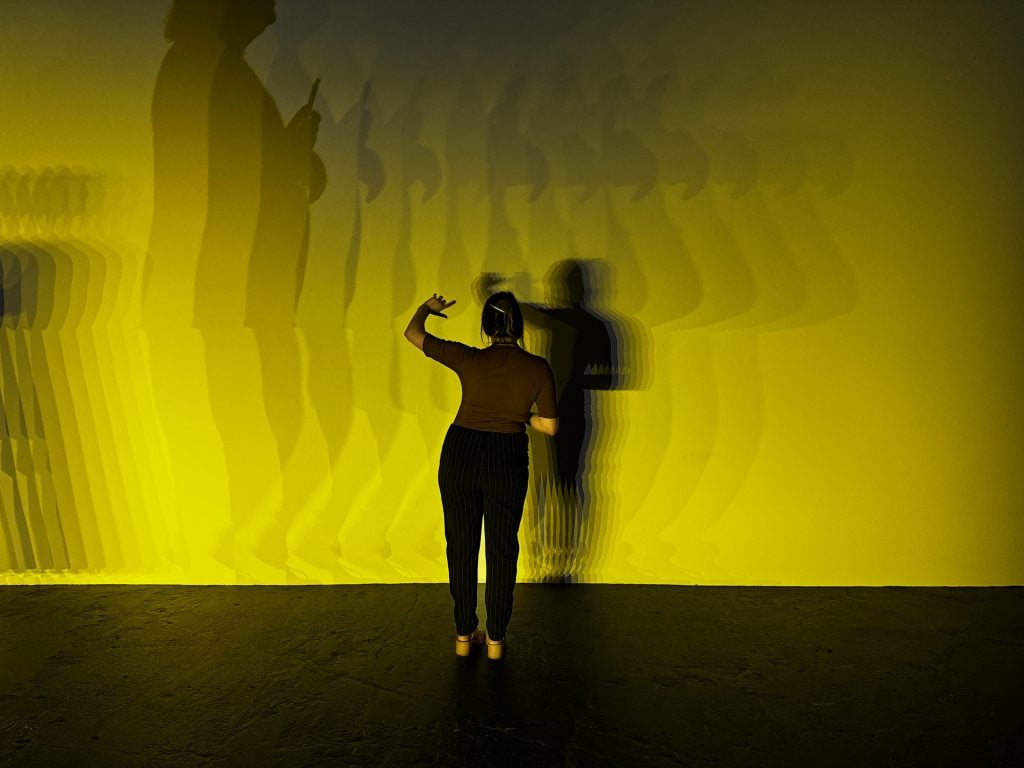
A visitor interacting with Olafur Eliasson’s Your sunset shadow (2024) at MOCA Geffen. Photo: Min Chen.
Eliasson himself appears to not have sat out on the exploratory play. A wall in a gallery features his series of “Seeing Paintings,” the latest in his color experiments, which he began more than a decade ago. These new circular creations were made by ice melting in a pool of blank ink, leaving arbitrary stains and trails that spread out from the center toward an outer ring of colored paint. They’re a record of time as much as Eliasson’s own abiding embrace of unpredictability.
It’s an openness that the artist emphasized at the preview, as he ran through a manifesto-esque list that guided the exhibition (and is printed on tote bags available at the MOCA Geffen store). The show’s title, he noted, is purposeful.
“Am I open to my vulnerability? Am I open to other’s perspectives?” he said. “Am I open to sharing? This is why I am here today: I am very much in the spirit of wanting to share, [even] my uncertainty and inconclusiveness. [I want to] lean into that unknown-ness that might create space for your own story. The show is open to your interpretation, your own view, your own world.”
“Olafur Eliasson: OPEN” is on view at the Geffen Contemporary at MOCA, 152 N Central Ave, Los Angeles, California, September 15, 2024–July 6, 2025.

